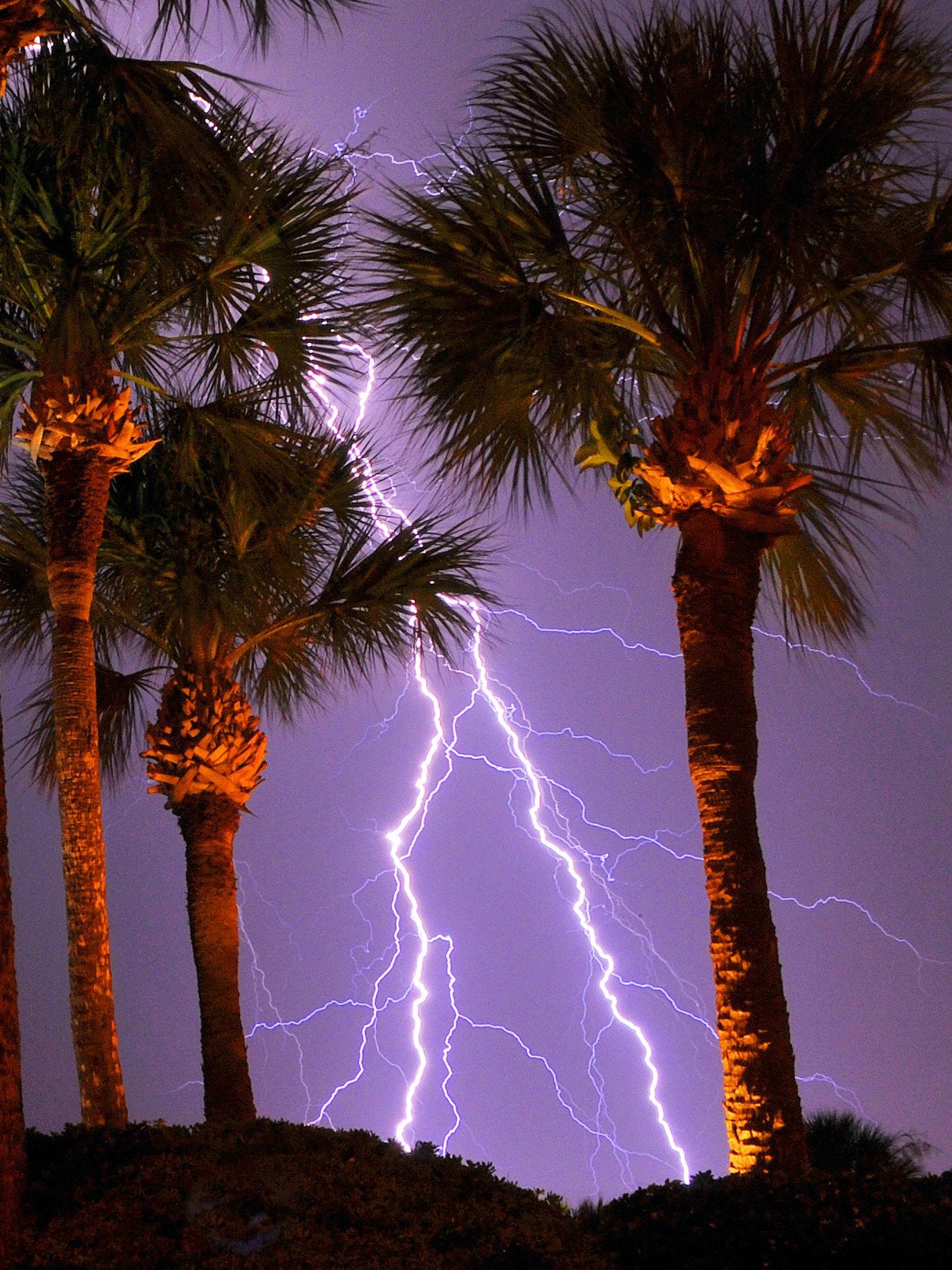
Always be aware and check the weather forecast before participating in outdoor activities. If the forecast calls for thunderstorms, postpone your trip or activities until it is safe. Lightening from thunderstorms usually strike with little to no warning, especially during the warmer months of the year. The lightning strikes from these thunderstorms pose a serious threat to people and safety. Knowing what to do in a storm is critical to ensuring your safety when you may be caught unexpectedly. The following tips can help you stay safe when a storm is passing through.
- Find shelter indoors. Get inside the nearest available hard-topped vehicle or building, keeping all windows shut, and stay there for at least 30 minutes after the storm passes before returning outside. Avoid picnic tents, pavilions or other open, outdoor structures.
- Get to low ground. Lightning seeks higher ground, so if possible find the lowest point and seek shelter.
- Stay away from tall objects. Never stand near tall structures — particularly metal ones — which can act as lightning rods. Avoid lone trees, flagpoles, telephone poles, fences and antennas.
To measure an approximate distance in miles, the Flash-To-Bang method is usually the easiest to use to figure out how much time you have to reach shelter. First, count how many seconds pass between the flash of lightning and clap of thunder, then divide by five to find the approximate distance in miles.
In cases when a safe, indoor shelter is not available, here are some scenario-specific tips that may help lessen your chance of being struck by lightning:
On The Beach
If you are swimming as a storm is approaching, get out of the water immediately. If your car is parked within walking distance, return to it immediately and head home, or wait at least 30 minutes until the storm has passed before returning to the beach area. Do NOT stand under picnic or other open-sided shelters and never stand under the lifeguard chair or near metal objects (fences, poles). In general, a significant lightning threat extends outward about 6 to 10 miles from the base of a thunderstorm cloud, so it is safe to assume that lightening can strike near you.
On A Boat
Most lightning-related injuries and deaths on boats occur on vessels without a cabin. Larger boats with cabins are relatively safe, particularly when a lightning protection system is properly installed. If you cannot return to shore before the storm hits, drop anchor and get as low as possible or retreat to a cabin if your boat has one. Remember to stay off the radio unless there is an emergency. It is also a good idea to keep away from metallic surfaces, which may conduct electricity. If possible, return to shore before the thunderstorm reaches your boat, and seek indoor shelter.
On A Golf Course
If you aren't near the clubhouse, move away from hilltops, open areas and water and stay as far away from tall trees and metal conductors, such as wires and fences. Move away from your golf cart and clubs and try to maintain at least 20 feet of distance between you and other golfers on the course. If possible find the lowest place possible, such as a ravine or valley, and squat in a baseball catcher’s position with your heels touching, ears covered, and head between your knees. Minimize contact with the ground, and do not lie flat.
On A Trail
Always avoid lone trees and other tall objects when on a hiking trail during a thunderstorm. Stay away from rocky outcrops, ledges, water and wet items like ropes and towels. If you are deep in the forest, retreat underneath a group of small trees, preferably surrounded by taller ones. In more open areas, retreat to and crouch down in the closest dry, low area, such as a ravine or valley, and squat in a baseball catcher’s position, and minimize contact with the ground and do not lay flat.
Indoor Safety Tips
Even though your home is a safe shelter during a lightning storm, you may still be at risk. About one-third of lightning-strike injuries occur indoors. Here are some tips to keep safe and reduce your risk of being struck by lightning while indoors.
- Avoid water
Do NOT bathe, shower, wash dishes, or have any other contact with water during a thunderstorm because lightning can travel through a building’s plumbing.
- Avoid electronic equipment
Do NOT use your computers, laptops, game systems, washers, dryers, stoves, or anything connected to an electrical outlet. Lightning can travel through electrical systems, radio and television reception systems, and any metal wires or bars in concrete walls or flooring. Equip your home with whole-house surge protectors to protect your appliances.
- Avoid corded phones
Corded phones are NOT safe to use during a thunderstorm. Do NOT use them. However, it is safe to use cordless or cellular phones during a storm.
- Avoid windows, doors, porches, and concrete
Do NOT lie on concrete floors during a thunderstorm. Also, avoid leaning on concrete walls. Lightning can travel through any metal wires or bars in concrete walls or flooring.